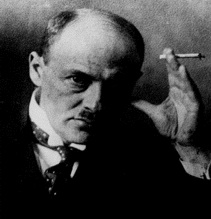
Jealousy generally refers to the thoughts or feelings of insecurity, fear, and concern over a relative lack of possessions or safety.

Manipura is the third primary chakra according to Vedic tradition.
In Sikhism, Chardi Kala or Charhdi Kala, is the Punjabi term for aspiring to maintain a mental state of eternal resilience, optimism and joy; an acceptance that life ebbs and flows with hardship and to rise above that adversity. Sikhs are ideally expected to be in this positive state of mind as a sign of their contentment with the will of God, even during times of suffering.
Kleshas, in Buddhism, are mental states that cloud the mind and manifest in unwholesome actions. Kleshas include states of mind such as anxiety, fear, anger, jealousy, desire, depression, etc. Contemporary translators use a variety of English words to translate the term kleshas, such as: afflictions, defilements, destructive emotions, disturbing emotions, negative emotions, mind poisons, and neuroses.

Resentment is a complex, multilayered emotion that has been described as a mixture of disappointment, disgust and anger. Other psychologists consider it a mood or as a secondary emotion that can be elicited in the face of insult and/or injury.
Gad Guard is a 26-episode anime television series created by animation director and screenwriter Hiroshi Nishikiori, manga artist and mechanical designer Yoshitsune Izuna, and Gonzo. Produced by Media Factory, GDH, IMAGICA Imageworks, Hakuhodo, Amber Film Works, and Fuji Television, the series was broadcast across Japan by the anime satellite television network Animax, and the terrestrial Fuji TV network. It has been licensed for North American distribution by Geneon Entertainment, and also aired on Anime Unleashed on G4 in 2005. With FUNimation's "New Show A Go-Go", they have acquired the distribution rights of the anime, and it was available in early 2009.

Sufi cosmology is a Sufi approach to cosmology which discusses the creation of man and the universe, which according to mystics are the fundamental grounds upon which Islamic religious universe is based. According to Sufi cosmology, God's reason for the creation of this cosmos and humankind is the "manifestation" and "recognition" of Himself as it is stated in Hadith Qudsi – "I was a hidden Treasure; I desired to be recognized so I created the creature".

A power ring is an object featured in American comic books published by DC Comics. The power ring first appeared in All-American Comics #16 on July 14, 1940.
The law of attraction is the New Thought spiritual belief that positive or negative thoughts bring positive or negative experiences into a person's life. The belief is based on the idea that people and their thoughts are made from "pure energy" and that like energy can attract like energy, thereby allowing people to improve their health, wealth, or personal relationships. There is no empirical scientific evidence supporting the law of attraction, and it is widely considered to be pseudoscience.

Joy Berry is an American writer and child development specialist.
In psychology, compensation is a strategy whereby one covers up, consciously or unconsciously, weaknesses, frustrations, desires, or feelings of inadequacy or incompetence in one life area through the gratification or excellence in another area. Compensation can cover up either real or imagined deficiencies and personal or physical inferiority. Positive compensations may help one to overcome one's difficulties. On the other hand, negative compensations do not, which results in a reinforced feeling of inferiority.
Suresh Bhardwaj is an Indian theatre, film and television director as well as a lighting and scenic designer. He has acted in many plays as lead actor as well. He is the director of (Aakar Kala Sangam) (AKS), a Delhi based theatre group. He has also served as faculty member of the National School of Drama In 2005 he received the Sangeet Natak Akademi Award for lighting design from the Sangeet Natak Akademi, India's National Academy of Music, Dance & Drama.

The Power of Positive Thinking: A Practical Guide to Mastering the Problems of Everyday Living is a 1952 self-help book by American minister Norman Vincent Peale. It provides anecdotal "case histories" of positive thinking using a biblical approach, and practical instructions which were designed to help the reader achieve a permanent and optimistic attitude. These techniques usually involved affirmations and visualizations. Peale claimed that such techniques would give the reader a higher satisfaction and quality of life. The book was negatively reviewed by scholars and health experts, but was popular among the general public and has sold well.

Emotion classification, the means by which one may distinguish or contrast one emotion from another, is a contested issue in emotion research and in affective science. Researchers have approached the classification of emotions from one of two fundamental viewpoints:
- that emotions are discrete and fundamentally different constructs
- that emotions can be characterized on a dimensional basis in groupings

Envy is an emotion which occurs when a person lacks another's quality, skill, achievement, or possession and either desires it or wishes that the other lacked it.

Max Scheler (1874–1928) was an early 20th-century German Continental philosopher in the phenomenological tradition. Scheler's style of phenomenology has been described by some scholars as “applied phenomenology”: an appeal to facts or “things in themselves” as always furnishing a descriptive basis for speculative philosophical concepts. One key source of just such a pattern of facts is expressed in Scheler’s descriptive mapping of human emotional life as articulated in his seminal 1913–1916 work, Formalism in Ethics and Non-Formal Ethics of Values.

Max Scheler (1874–1928) was both the most respected and neglected of the major early 20th century German Continental philosophers in the phenomenological tradition. His observations and insights concerning "a special form of human hate" and related social and psychological phenomenon furnished a descriptive basis for his philosophical concept of "Ressentiment". As a widely recognized convention, the French spelling of this term has been retained in philosophical circles so as to preserve a broad sense of discursive meaning and application. Scheler died unexpectedly of a heart attack in 1928 leaving a vast body of unfinished works. Extrapolations from his thoughts have always since piqued interest and discussion on a variety of topics. His works were on the Nazi book burn list.
The karmic process in Jainism is based on seven truths or fundamental principles (tattva) of Jainism which explain the human predicament. Out of those, four—influx (āsrava), bondage (bandha), stoppage (saṃvara) and release (nirjarā)—pertain to the karmic process. Karma gets bound to the soul on account of two processes:
In Hindu theology, arishadvarga or shadripu are the six enemies of the mind, which are: kama (desire), krodha (anger), lobha (greed), mada, moha (Attachment), and matsarya (Partiality); the negative characteristics of which prevent man from attaining moksha.
In social psychology, collective narcissism is the tendency to exaggerate the positive image and importance of a group to which one belongs. The group may be defined by ideology, race, political beliefs/stance, religion, sexual orientation, social class, language, nationality, employment status, education level, cultural values, or any other ingroup. While the classic definition of narcissism focuses on the individual, collective narcissism extends this concept to similar excessively high opinions of a person's social group, and suggests that a group can function as a narcissistic entity.














